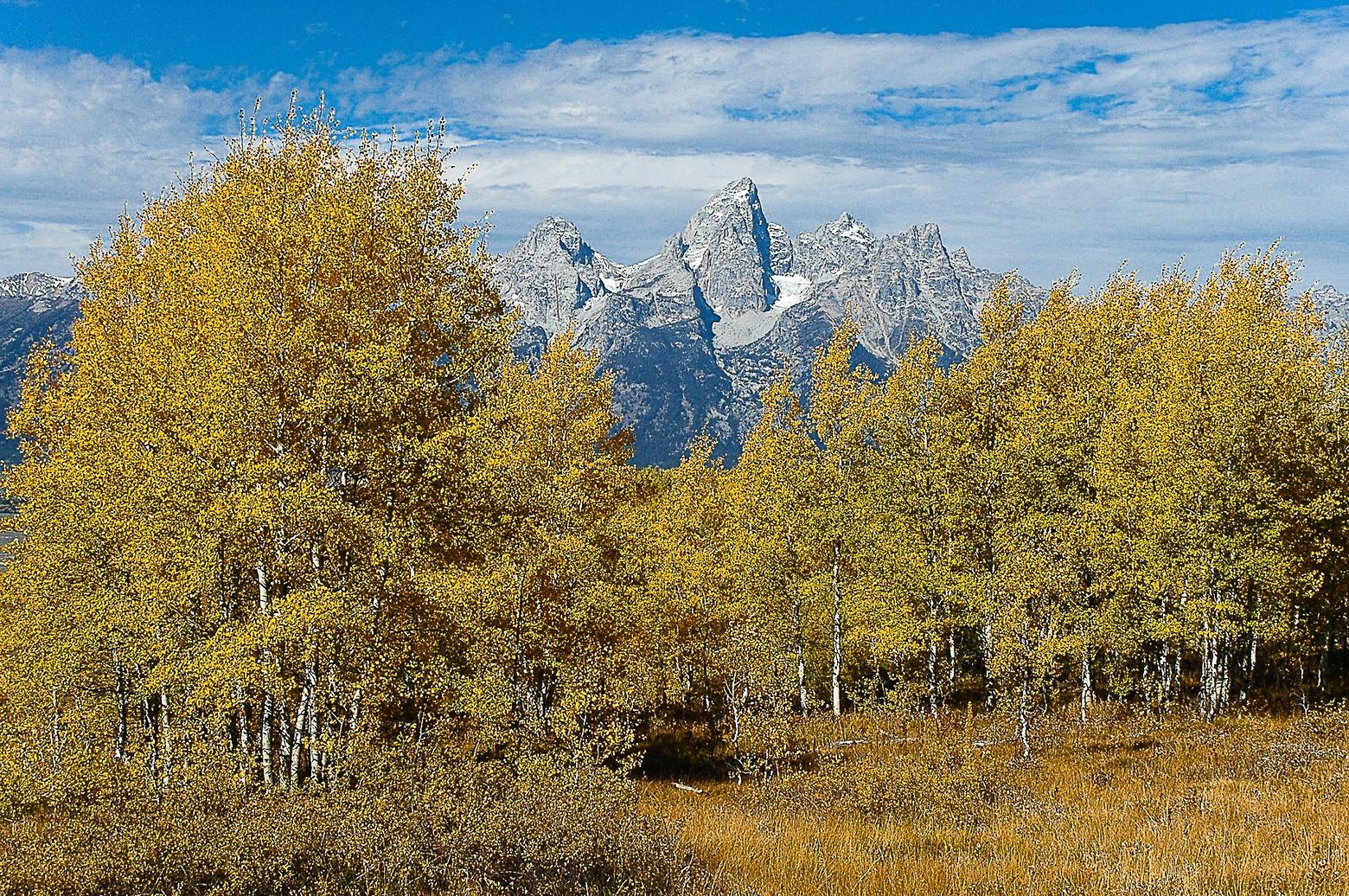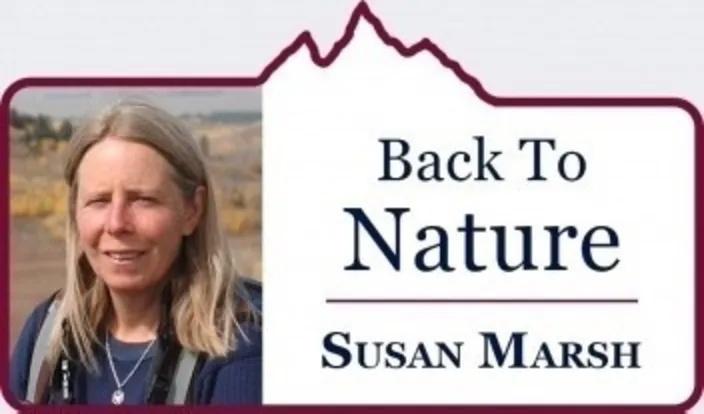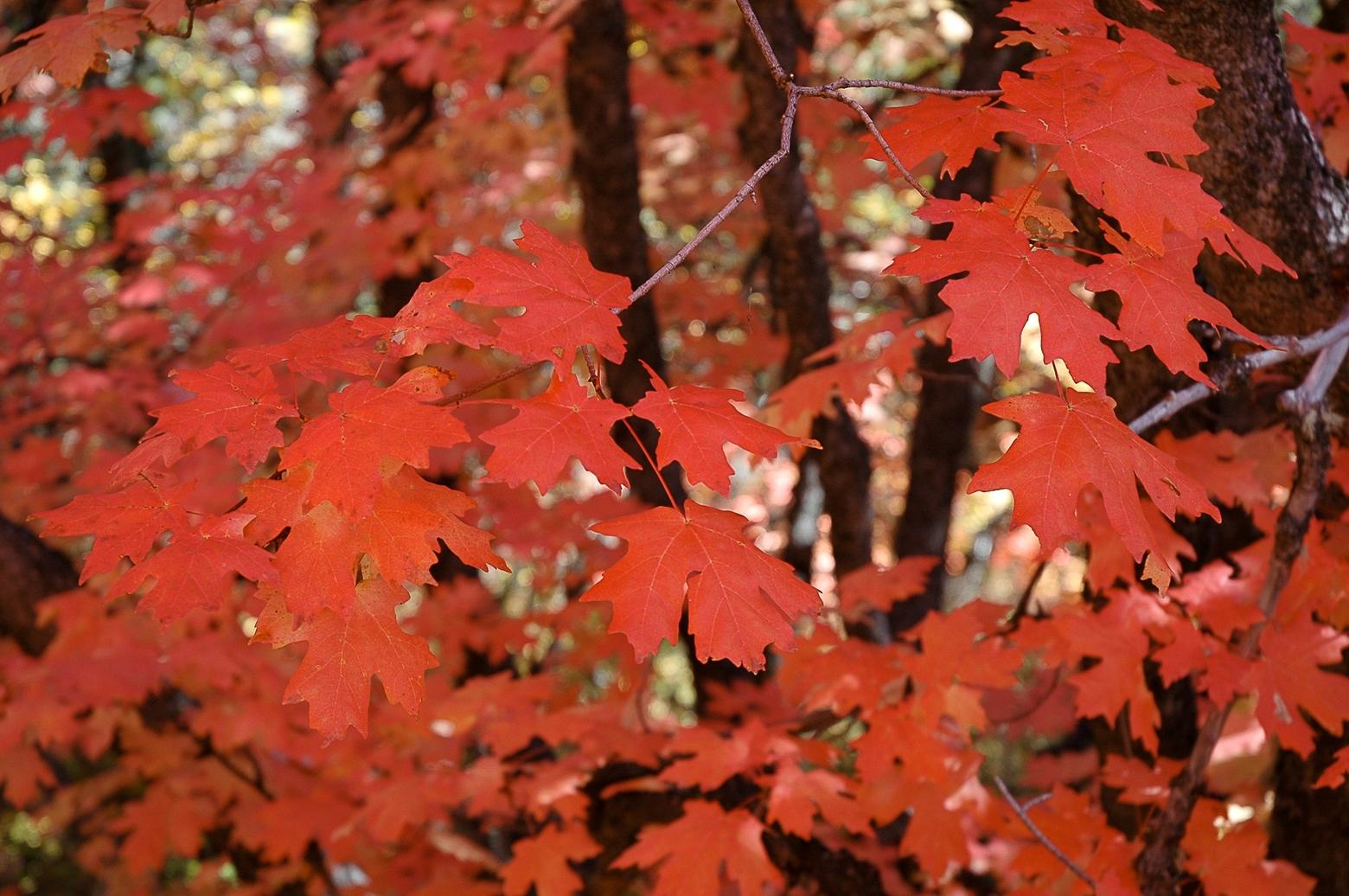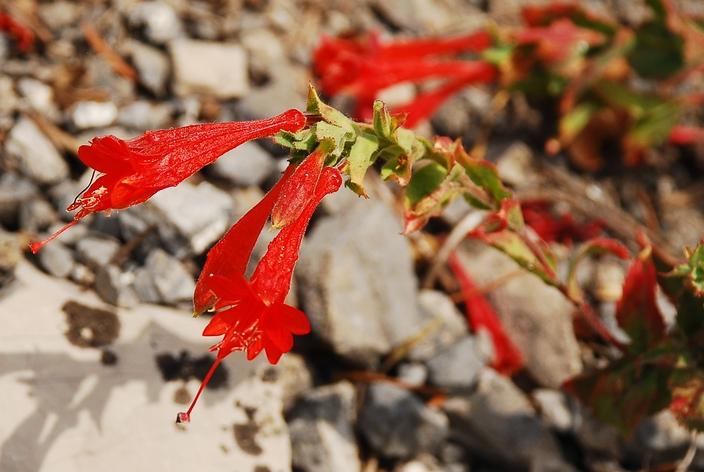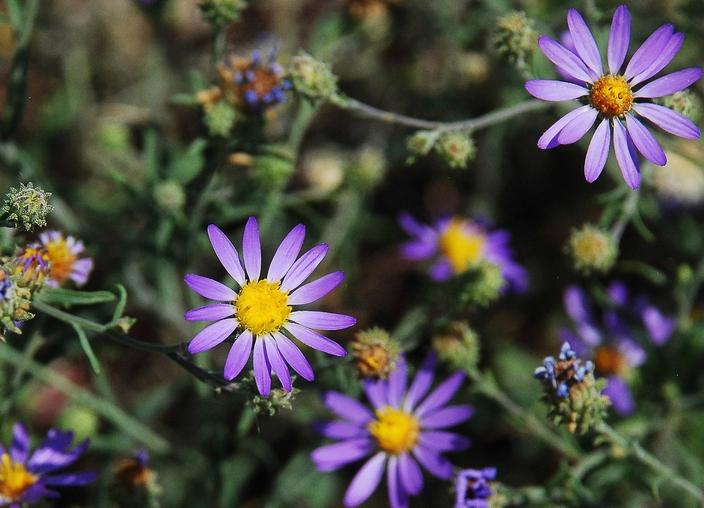Back to StoriesThe Ephemeral Beauty of Autumn
October 7, 2024
The Ephemeral Beauty of AutumnDuring the shifting of the seasons, columnist Susan Marsh writes that the small things can bring peace of mind
Column and photos by Susan Marsh
I have written about the
ephemeral beauty of autumn enough times that each year I think I’ve said it
all. But there is always something new, whether it previously went unnoticed or
whether it’s something you’ve never seen before at all. As fall foliage begins
to out-compete the fading beauty of wildflowers, my mind remains with those
little flowers, and how each time I encounter one in bloom so late in the
season, it provides a small jolt of a thrill, as if I were seeing it for the
first time.
A fall
favorite is a member of the evening primrose family, which blooms well after
its kin have gone to seed. The first time I encountered it, I mistook it for
the brilliant red penstemon that I had only seen in southern Utah, but there it
appeared: in the Snake River Canyon.
I was on
that trail in late September nearly 40 years ago to wallow in the beauty of
bigtooth maple, a close relative of the sugar maple and known to drape the dry
mountainsides with the same scarlet hues that draw leaf-peepers to New England
every year. The maple did not disappoint, but my husband and I decided to keep
hiking beyond the maple zone for views of the river and mountains beyond.
I bent to
the trail at one point, intrigued by a recently shed snakeskin. And there I saw
the flower, poking out of a crack in a shale outcrop, the same color as the
maple leaves.
The flowers
were past full bloom and slightly limp from frost, but I photographed them anyway.
I thought they looked like penstemon, but the red ones weren’t supposed to grow
this far north. Maybe with my photos I could identify them later, I thought. Meanwhile,
I hurried to catch up to Don who was well ahead of me on the trail.
When I
received the box of slides (remember slides?) I compared my images to photos I
had of Eaton’s “firecracker” penstemon from a trip to Zion National Park. There
was a resemblance between the flowers—they were long and red—but they weren’t
identical. I looked more closely at the flower shape: mine had petals that
flared at the edges and looked a bit ruffled; the penstemon wasn’t like that.
Mine had stigmas that extended well beyond the length of the petals; the
penstemon did not. Mine had leaves with fine hairs and were alternate; the
penstemon had opposite leaves. Finally I counted the petals. Mine had four;
penstemons have five.
And whenever I find fire chalice in bloom, I’m reminded of that first encounter, the delicate snakeskin, and the wonder I felt upon finding them together.
The petal
number led me past the families I could easily dismiss: I was pretty sure I
wasn’t looking at a mustard, gentian or clematis. There wasn’t much resemblance
to fireweed but I checked the section of a comprehensive flora book titled Onagraceae (evening primrose).
To my
surprise and relief, I found an illustration in the book that matched the
flower I’d seen. Finally. Recognition and amazement lit up my brain; I felt
like a life-lister bird enthusiast who had just seen an eagle owl in a
cottonwood.
Ever since,
the fire chalice (Epilobium canum) has
become a sought-after sign of fall. It’s fussy about habitat, preferring dry
and rocky crannies, and because the few places I’ve seen it are widely
scattered and the patches are small, I wonder how it finds new places to
establish. Wind, I guess; its seeds look a lot like those of fireweed, with
little hairy parachutes.
Now I compare
the wonder of seeing a plant for the first time and the wonder I feel when I
encounter it again. It’s not a total surprise, but it makes me feel somehow
privileged to have found something rare that I now recognize.
The plant
doesn’t even have to be rare. Another fall favorite is the hoary tansyaster (Dieteria/Macaranthera canescens). Dry
slopes are bereft of any color other than straw-tan until you happen into a
patch of these little beauties. There are dozens of others, depending on where
you live and the elevation.
From
mid-September through the early days of October, we are treated to blazing
colors in aspen, maple, chokecherry and other shrubs. It’s easier to look up
than down, and impossible to walk more than a few steps without stopping to
stare at the leaves and snap a photo or 10. Sometimes a slight breeze will stir
the leaves into motion. And it’s wonderful to close one’s eyes and just listen
to them, those gentle slaps of waxy, translucent leaves, so soon to fall.
While I
never get tired of tramping among the trees, I am still drawn to the late
bloomers, or second-bloomers. Recently, some mountain false-dandelion and
roundleaf harebell in bloom gave me an extra shot of good cheer as I wandered
through stand after stand of golden aspen. And whenever I find fire chalice in
bloom, I’m reminded of that first encounter, the delicate snakeskin, and the
wonder I felt upon finding them together. Such memories accumulate into a deep
love of place, a sense of belonging to it, and solace during a time when information
overload, concern about the future, and general anxiety can send me into a pit
of despondency.
So I get out
there as often as possible, even if I only have an hour. It’s the combination
of experiencing the wild and wondrous world around me, and remembering other
times when I have done the same, that sends me back home to waiting chores and
emails in a buoyant frame of mind.
Related Stories
October 28, 2024
Love and Hope in a Time of Uncertainty
In the wake
of the passing of Grizzly Bear 399, Susan Marsh writes that even through the
fog of despair, love and persistence...
December 31, 2024
Follow the Light
Looking to 2025, columnist Susan
Marsh writes that in the new year we should embrace the world with tenderness.
March 19, 2025
Seasons of Resurrection
As Easter nears and the vernal equinox is
upon us, the concept of resurrection lives in the rebirth of nature and its
beings.
...

